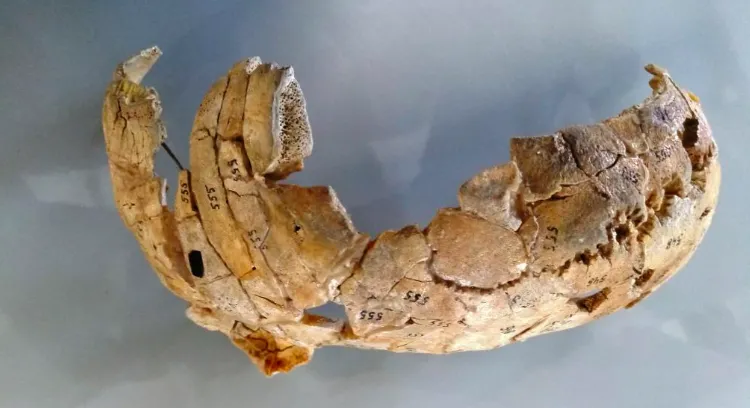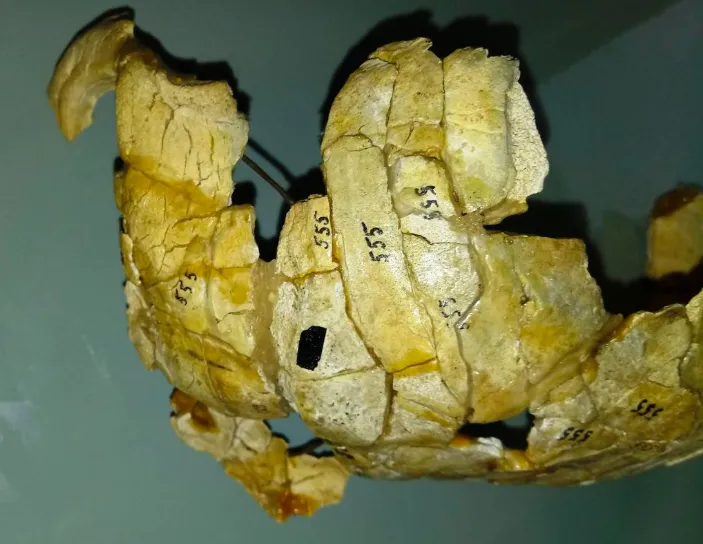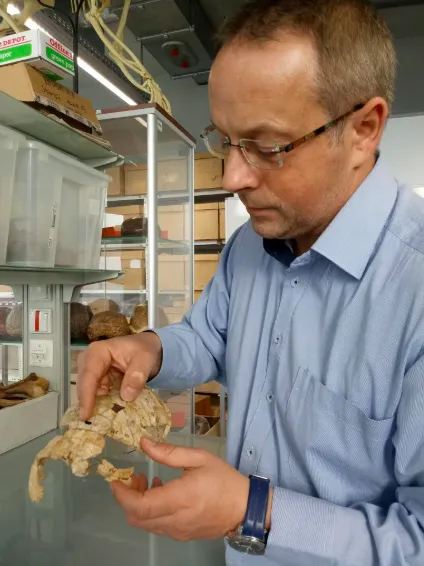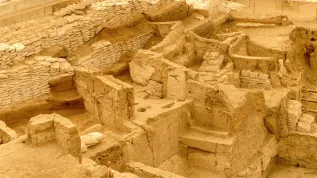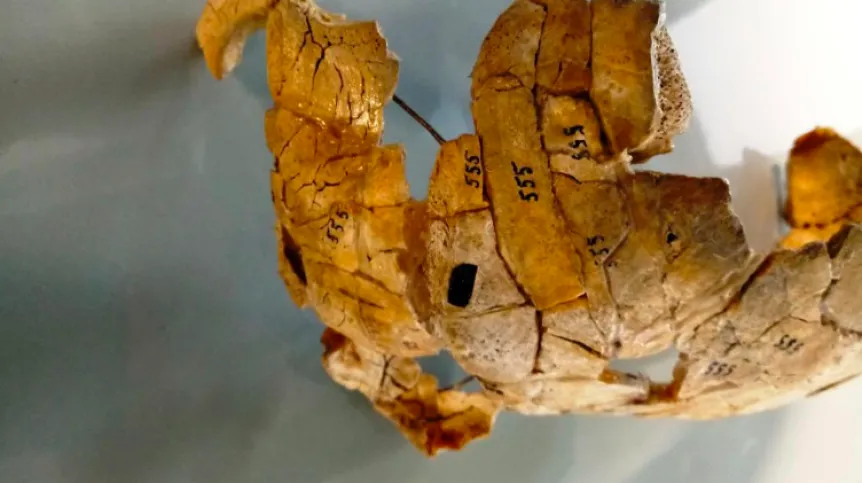
Hunter from 8 thousand ago, whose remains were discovered more than half a century ago on the Narew River, had not been eaten as previously thought. He suffered a blow to the head but survived the event, researchers say after examining the remains under an electron microscope.
At the end of the 1950s, archaeologists in Wieliszew on the Narew River (Mazowieckie) excavated human bones from the dunes. They also found prehistoric flint tools. Due to the fact that the discovered remains were burned, and the skull bone also mechanically damaged, they interpreted it as evidence of cannibalism from the Mesolithic (about 8 thousand years ago) - the period after the end of the last ice age.
Now researchers from the Cardinal Stefan Wyszyński University in Warsaw re-examined the remains using the latest methods, including electron microscopy and computed tomography.
"It turns out that the damaged skull shows traces of healing that can not be seen with the naked eye. This means that the person did not die immediately after the trauma occurred. That contradicts the archaeologists` opinion that we are dealing with a victim of cannibalism" - says lead researcher Prof. Jacek Tomczyk, physical anthropologist from the Department of Environmental Biology, Cardinal Stefan Wyszyński University.
Evidence of alleged cannibalistic practices from the Mesolithic in Poland are known only from one more place - Pomorsko in the Lubusz Lake District. Researchers found stronger confirmation of such practices during excavations in Western Europe, for example in France and Germany.
However, the latest research indicates that in the case of the remains discovered in Wieliszew, the concept of cannibalism is false.
"This is the first case from Mesolithic Poland, where we see bone damage and healing" - the researcher notes.
Another puzzle of the Wieliszew bones is the fact that the bones were partially burned. Perhaps it was an element of burial practices (in the Mesolitic, the dead were either burned or their corpses were buried in their entirety). "We also did DNA testing, but unfortunately tissue damage caused by high temperatures made it impossible to obtain reliable results" - the researcher adds.
Researchers estimate that the deceased was most likely a 20-30 years old man. In their opinion, damage to the skull on the frontal bone indicates that it was not an accident. "Perhaps he was struck with a sharp tool - the edges of the damaged area are regular" - adds the anthropologist. The deceased could be a hunter, as evidenced by flint tools discovered in the vicinity of the bones.
According to the researchers, scarring is not visible on the entire damaged area. This may mean that the person survived 7-8 days after receiving the blow.
So far, only single remains of people from the Mesolithic have been discovered in Poland. The most complete skeleton, discovered in 1937, comes from Janisławice. It is also the subject of analyses and work of the team of Prof. Tomczyk, who scanned it and printed it using a 3D printer.
PAP - Science in Poland, Szymon Zdziebłowski
szz/ zan/ kap/
tr. RL

